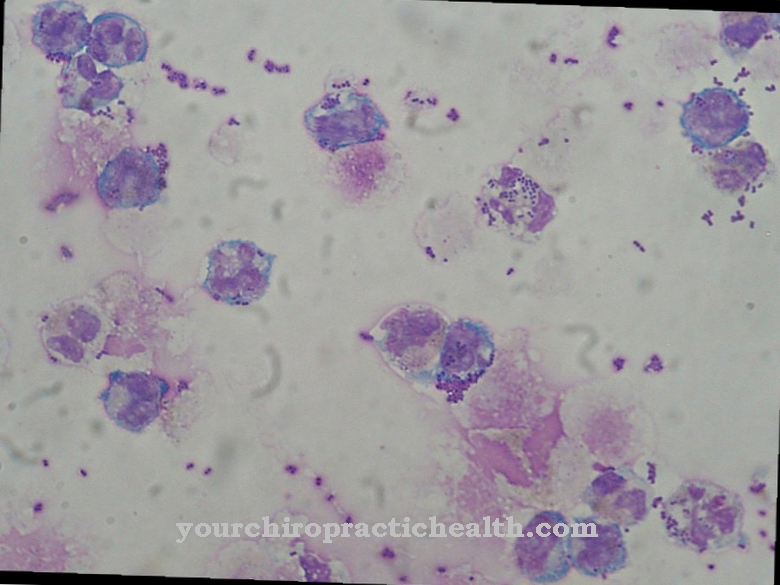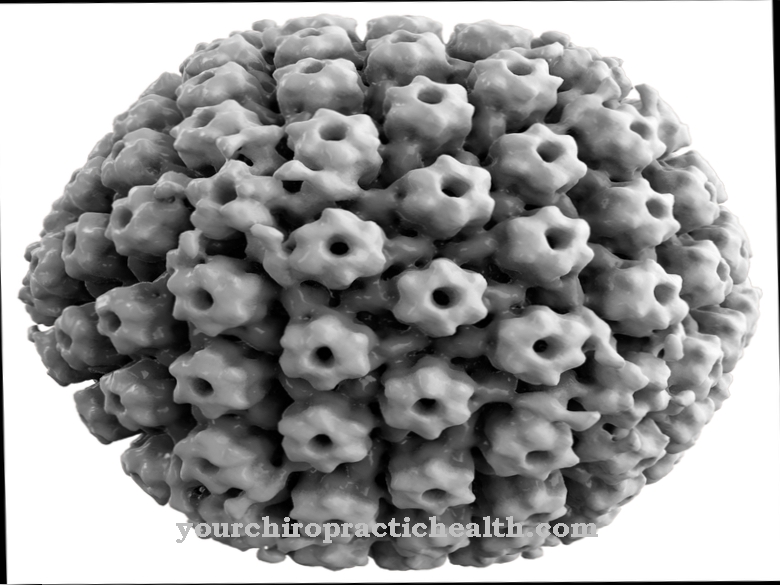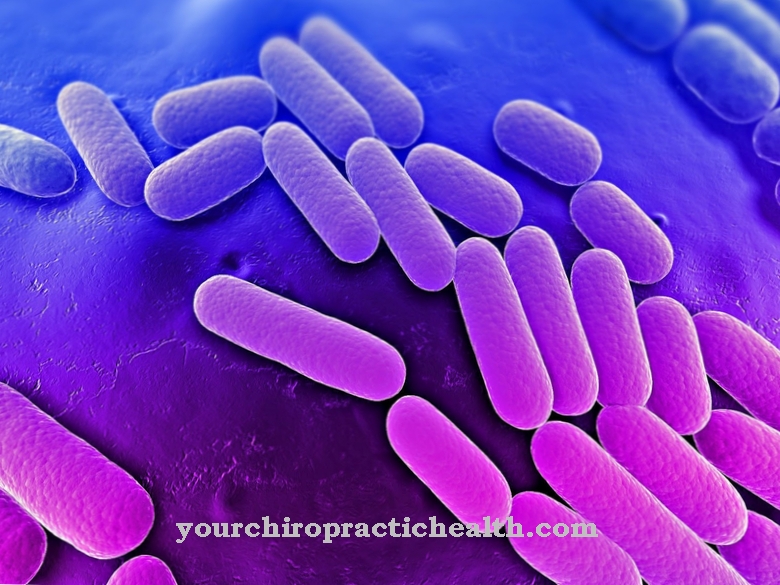At Epidermophyton floccosum it is a species of fungus from the subgroup Eurotiomycetidae and the class Eurotiomycetes, which is counted among the Onygenales and including the fungus family Arthrodermataceae and genus Epidermophytes. The fungus is a dermatophyte and thus a possible causative agent of dermatophytosis. The infection is pathogenic to humans and manifests itself in skin and nail changes.
What is Epidermophyton floccosum?
The Eurotiomycetes represent a class of the sac fungi. The Eurotiomycetidae form a subclass in this class of fungi. Below this is the order of the Onygenales, which includes the fungus family of the Arthrodermataceae. In this family, Epidermophyton forms a genus. Within this genus of fungi, the species Epidermophyton floccosum is one of the best-known species. The species is assigned to the non-taxonomic group of dermatophytes, which includes thread fungi with a carbohydrate and keratin diet.
The species Epidermophyton floccosum is the only human pathogenic fungus within the fungal genus of the Epidermophytes. In the microscopic picture the species consists of club-shaped smooth and thin-walled macroconidia, which can have up to eight chambers. The chambers are usually isolated lateral to the septate hyphae. Sometimes they sit terminally in groups of up to five and are arranged in clusters. Their width can be up to twelve micrometers. They can reach up to 40 micrometers in length. The Epidermophyton floccosum does not form microconidia. Intercalary terminal chlamydospores are often observed.
Occurrence, Distribution & Properties
Fungi of the species Epidermophyton floccosum have their optimum growth at temperatures of around 28 degrees Celsius, but can also grow in an environment of 37 degrees Celsius. This makes the constantly warm human body a suitable growth environment.
Unlike many other dermatophytes, the species Epidermophyton floccosum does not attack hair under any circumstances. The bacterial species grows moderately quickly on Sabouraud glucose agar and Mycosel agar and initially appears white. The thalus takes on its characteristic olive-green color within days. In addition, there are purple and pink colored variations.
The flat colonies usually have a central elevation that has a button shape. Radial furrows or folds characterize the isolate. A colony of Epidermophyton floccosum can grow up to 25 millimeters in size within just a week. After about three weeks, white and cotton-wool-like aerial mycelium flakes form within the colonies.
With age the fungus becomes pleomorphic and is composed of white and cotton wool-like sterile mycelium. The mycelium is the entirety of hyphae of a fungus or bacterium. Fungi of the species Epidermophyton floccosum are dermatophytes and have the enzyme keratinase. In contrast to other dermatophytes, they break down keratin for growth purposes.
The type of fungus is transmitted from person to person. In most cases, the transmission does not take place directly, but takes place via baths, showers, towels, shoes or other clothing such as underwear. In humans, the fungi most often colonize the groin or legs. However, colonization is also possible on the face, neck, back, abdomen, arms, backs of the hands, palms and spaces between the fingers. In addition, the fungi feel good on the soles of the human feet, in the spaces between the toes and in the area of the nails.
For infection with the Epidermophyton floccosum, in addition to direct and indirect human-to-human transmission, transmission through contact with contaminated animals is also possible. In addition, the fungus can migrate from the soil to the human host. The infection with Epidermophyton floccosum is always pathogenic for humans and leads, for example, to skin mycosis in the form of red and scaly efflorescences that spread to the periphery. Onychomycoses (nail fungus) are the nail mycoses associated with the pathogen, which make the nails brittle and brownish.
Illnesses & ailments
Dermatophytosis is the term used to describe all skin diseases that are caused by filamentous fungi in the sense of dermatophytes. The fungal species Epidermophyton floccosum also causes dermatophytoses. Usually the disease only affects the superficial layers of the skin. The dermis or subcutis is rarely colonized. The disease is also known as tinea and affects not only skin areas but also the nails.
In principle, dermatophytosis can also affect the hair. However, this is not the case with an infection with Epidermophyton floccosum. The most common symptom of colonization with Epidermophyton floccosum are red pustules of the skin, which spread out in a ring to radial shape.
The pathogen is detected in clinical practice either by microscopic examination of the skin flakes and affected nail parts or by culture. Different active ingredients are used locally to treat patients. In addition to fluconazole and itraconazole, voriconazole has established itself as an active ingredient against all dermatophytes. In addition, terbinafine and triazoles are particularly suitable if the infestation is severe. Griseofulvin is now only rarely used for the treatment of fungal diseases.
The fungus Epidermophyton floccosum is a relatively common pathogen causing dermatophytosis in Central Europe. Compared with other dermatophytes, infection with him is the fourth most common. The pathogen detection is in any case considered a finding that requires therapy. The external treatment of this pathogen is mainly carried out using antifungal creams and solutions of the above-mentioned active ingredients. If the nails are affected, the treatment is systemic. Antimycotics in the form of tablets and capsules are suitable for systemic therapy of nail infestation.

























.jpg)


